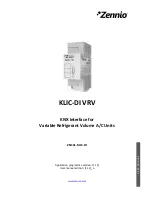
3
Accessories
TV
Two Remote Rooms
not
configured
with IR receivers.
(See item 4, pg 4).
480-00
CPL94B
Coupler
(1 location)
202-00
4-way RF Splitters
DC Passing
RF
AMP
Satellite Receiver
Laser Disc Player
VCR
Cable Box
2512
2-way
Combiner
Modulator
(3-Input)
A/V Patch
Cords
INJ94
Injectors (3)
TV
TV
TV
TV
TV
TV
TV
CB12
CB12
CB12
200-00
2-way RF splitter
DC Passing
291-80
480-00
480-00
291-10
490-30
781RG
Power
Supplies (6)
CPL10
Couplers (3)
Six Remote Rooms, each configured with IR receivers.
203-00
DC Blockers (2).
(See item 4, pg 4).
RF Signal
IR Signal
286M
Dual Blink-IR™
Mouse Emitter Assembly
286M
Dual Blink-IR™
Mouse Emitter
Assembly
EMITTER
REMO
TE TV
SA
T/VCR
CPL94B COUPLER
EMITTER
+12 V
IR
RCVR
TV
INPUT
INJ94
+12 V
IR
RCVR
TV
INPUT
INJ94
+12 V
IR
RCVR
TV
INPUT
INJ94
IR
RF
RF/IR
CPL10
IR
RF
RF/IR
CPL10
IR
RF
RF/IR
CPL10
IN
OUT
Fig. 4
Advanced Multiroom System
instead, along with a suitable connect-
ing block, such as the 789-44 or 791-44.
See the CPL10 installation instructions
for details.
7. For information on how to connect and
configure modulators and RF amplifi-
ers, refer to ChannelPlus
®
technical in-
formation.
TROUBLE SHOOTING
1. Perhaps the most common problem is
stray IR or RF interference entering IR
receivers, preventing proper operation
of the controlled equipment.
Examples of such interference are:
• Fluorescent, Compact Fluorescent,
Neon or Halogen lights, Neon Art, or
light dimmers.
• Direct or reflected sunlight.
• Infrared security sensors (active type).
• RF radiation from TV sets that may be
close to IR Receivers.
It may be necessary to move either the
interfering source or the IR receiver to
achieve proper operation. Sometimes
the Xantech Sun Filters will help.
2. If the IR receivers must operate in the
vicinity of electronically ballasted Com-
pact Fluorescent lamps or sunlight con-
ditions, use Xantech models 291-80 or
780-80 IR receivers. These are specifi-
cally designed to reject most of this type
ofinterference.
3. Check for shorts or opens anywhere
between the IR receivers in the remote
rooms and the emitters at the controlled
equipment.
•Remember, you must have DC conti-
nuity all the way from the IR (IR RCVR)
jacks on the Injectors, through the coax
cables to the IR (emitter) jack on the coupler, without shorts to ground.
• Use a Xantech
Test-IR
TM
plugged into the IR (emitter) jack on the coupler to verify that the IR
signal is being received from each room.
• If necessary, use a multimeter in the low Ohms range to check for continuity, shorts, opens, etc.
• Check for open emitters by substituting a known good emitter.
4. If a given component still does not work, reposition the emitter. It may not be located directly over the
component’s IR (infrared) receiving "window". Consult the owner's manual of the unit or the
manufacturer for the exact location of the infrared "window".
12-7-00
Rev.C
INJ94/CPL94





















